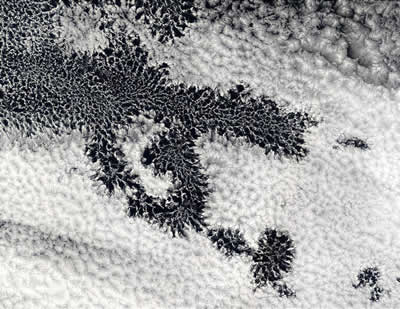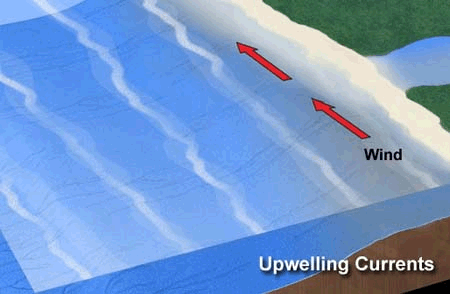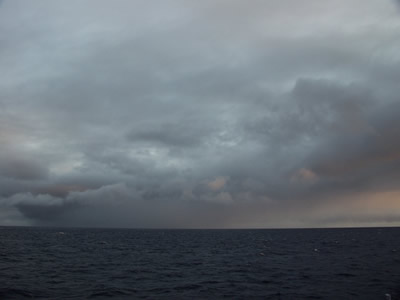The scientific results of the VOCALS field campaign are based on analysis of observations made by instruments located on ships, aircraft, and land. This map shows the paths followed by ships and planes over the Southeast Pacific and the observation stations along the coasts of Chile and Peru.
Click on image for full size
Courtesy of Robert Wood
What are the results of VOCALS?
Scientists must work very hard to understand the data collected in field campaigns like VOCALS. They must review and study it to determine what has been learned. Many model runs will be made and analyzed. Eventually, they will publish their discoveries in scientific journals and give oral presentations at conferences.
VOCALS will allow examination over an entire month of how variability in ocean currents, ocean upwelling, marine winds, and air pollution will impact the properties of the atmosphere, the clouds, and the amount of precipitation found there. The climate of the Southeast Pacific is especially complicated by the nearby Andes Mountain range.
VOCAL measurements will be important! They will add to current knowledge in the fields of atmospheric science and oceanography. They will be used to improve models exploring the atmosphere and climate. VOCALS could ultimately lead to much better predictions of future climate. Predictions are very important to people around the world who are in danger from the impacts of climate change, such as sea level rise, heat waves, drought, severe rainstorms, and changes in growing seasons.
You might also be interested in:

What if you wanted to learn more about the climate of a very large area of the world? What would be involved in studying how the oceans, land, and atmosphere interact? You would need to have a team of
...more
Scientists use lots of data from satellites in the VOCALS field campaign. They also gather data from instruments on ships and on airplanes. When they combine data from satellites, ships, and aircraft,
...more
There are many connections between the ocean and the atmosphere in the Southeast Pacific Ocean. Strong winds blow north along the coast of South America. These winds stir up the ocean. That brings cold
...more
The Atacama Desert is one of the driest places on Earth. The lack of water makes life hard, yet more than a million people live there. One place where people get the water they need to survive is from
...more
Scientists must work very hard to understand the data collected in field campaigns like VOCALS. They must review and study it to determine what has been learned. Many model runs will be made and analyzed.
...more
The Southeast Pacific region contains the world's most extensive sheet of stratocumulus clouds. These clouds extend for almost 2,000 kilometers (1,243 miles) off the west coast of South America from central
...more
The weather in the Southeast Pacific region can be considered extreme, in the sense that it receives very little rainfall and is extremely dry. For example, some places in the Atacama Desert in Chile receive
...more














